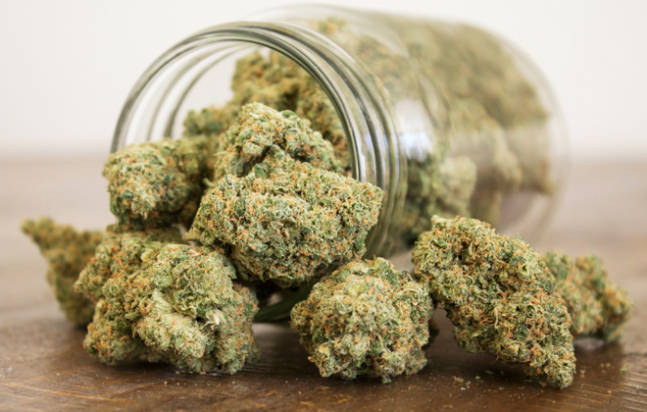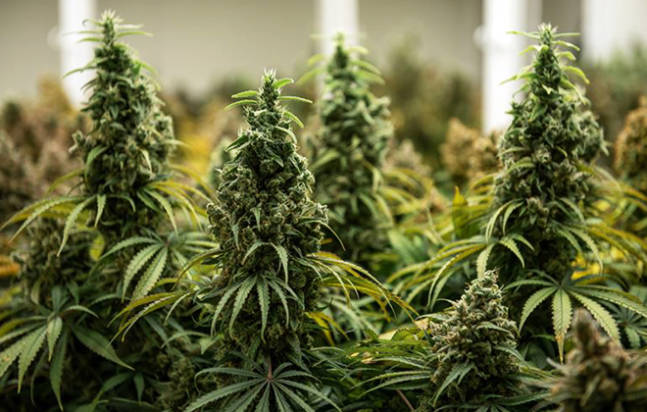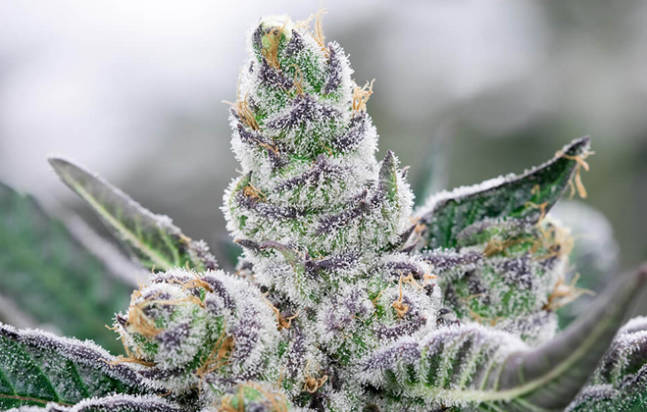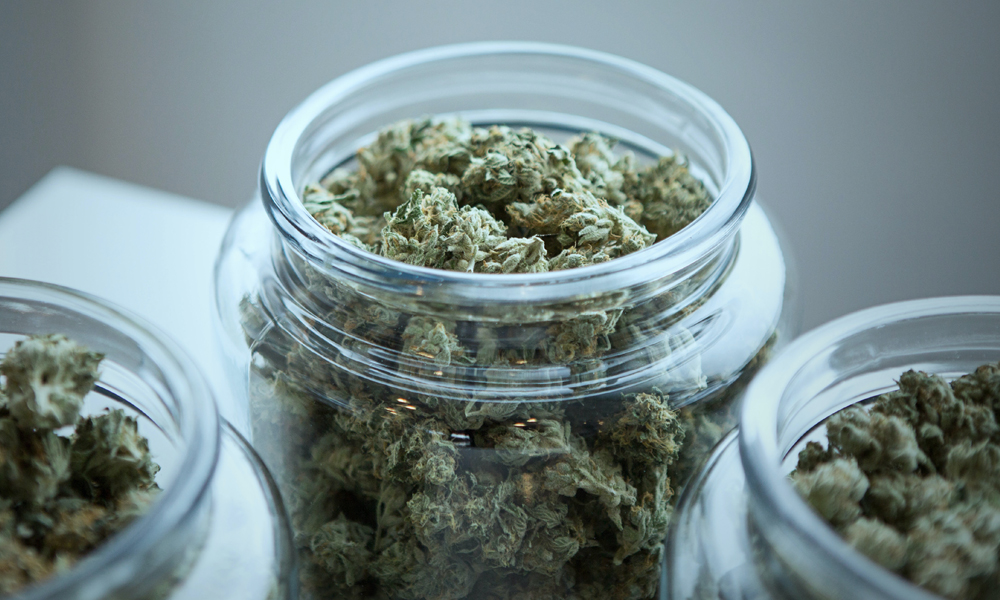The increasingly legal status of marijuana coupled with decades of abstinence-only education and fear-mongering means there are a lot of people out there who want to try cannabis for the first time but don’t know the basics. In the same way that we like to gently guide our readers through the many different types of ale, lager, whiskey, and wine, we thought we’d all benefit from a bit of a cannabis primer. Here are the main cannabis strains and what to expect from them.

Cannabis Indica Strains
Cannabis Indica is generally found in colder climates, originating in the Hindu Kush and Himalaya mountains and more broadly indigenous to India, Pakistan, and Afghanistan. It generally doesn’t grow higher than six feet, staying short and bushy with a thick main stem. The leaves are flat and broad with a dark green color that can sometimes exhibit shades of blue or black. Flowers are dense and grow at the nodes, where leaves sprout from the stem and branches.
Growth happens during long days and short nights, when most of the plant’s energy is devoted to its own size. When the days start to get noticeably shorter, the plant changes to devote energy to flowering. For proper cultivation, male plants should be eliminated to prevent female plants from producing seeds, instead stopping reproduction at the cannabinoid-rich flowers everyone loves. These are fast-growing plants that produce harvestable flowers quickly, making them more attractive and approachable for first-timers or growers who are short on time.
What to Expect from Smoking Indica Strains
Consuming Cannabis Indica will get you classically stoned. Physical sensation is enhanced, the body is relaxed (sometimes to the point of immobility), and the eyes go red and bloodshot. Common usage for an Indica heavy strain would be for nighttime relaxation. It’s to help you relax or fall asleep. In fact, most medical marijuana strains are Indica heavy, thanks to its heavily medicinal properties due to a more balanced level of production between THC and CBD.
Why You Might Use Indica Strains
Because of Indica’s association with medical marijuana, there are a plethora of reasons folks might choose to smoke or enjoy edibles of Indica Strains. Most commonly Indica will help with:
- Body/muscle pain
- Anxiety
- Nausea
- Appetite loss
- Insomnia

Cannabis Sativa Strains
As the most common and versatile cannabis species, Cannabis Sativa could accurately be called the workhorse of the marijuana world. It originated in more tropical and equatorial areas, giving it a shape that’s much closer to a small tree or shrub. Unlike Indica, Sativa gains height as it flowers and flowers as it gets taller, meaning its growth and flowering phases happen simultaneously. It’s taller and more sparse when it comes to leaves and branches, which reduces the chances of fungal growth and enhances the overall health of the plant. Its leaves are thin, light-green blades and flowers grow along branches and the stem instead of being limited to the plant’s nodes. Pure Sativa strains also require a solid six months for full growth and flowering and present more difficulties for indoor operations. Most Sativa heavy indoor plants are likely a Sativa-Indica hybrid, mostly to reduce overall size and time requirements.
What to Expect from Smoking Sativa Strains
Sativa produces the stereotypical cerebral high, enhancing creativity and energizing the mind. This is the one to go for if you’re looking for inspiration or focus in a creative pursuit. It’s also the one that ends up prompting the munchies, which actually come with unexpected medical benefits. If you know people who use medical marijuana to combat any kind of eating disorder or medical procedures that can eliminate someone’s appetite, like chemotherapy. Sativa plants are also the ones with the most industrial uses. Hemp’s been used to make paper, clothes, string, and rope for millennia, and recent trends indicate we’re returning to that tradition.
Why You Might Use Sativa Strains
While sativa tends to have an association with inducing creativity and energy, it also has several health benefits – particularly when it comes to loss of appetite as well as depression or anxiety symptoms. Most commonly Sativa strains will help with:
- Depression symptoms
- Creativity/focus
- Pain management/headaches
- Nausea
- Appetite loss

Cannabis Ruderalis Strains
Cannabis Ruderalis is a rarer, less researched, and virtually uncultivated species of cannabis originally found in Russia, central Europe, and central Asia. Scientists aren’t even really sure it should be a species on its own. Its name, Ruderalis, comes from its status as a ruderal plant, which is the name of wild plant species that reclaim areas that have been disturbed or damaged by natural and human activity. It rarely grows taller than 3 feet.
The most interesting feature of Ruderalis is its auto-flowering ability, which is when a plant reacts to internal factors instead of external. In Ruderalis’s case, it flowers based on its age, usually five to seven weeks, instead of the length of days and nights. From there, it continuously flowers until something external kills the plant. This is unlike Indica and Sativa plants, which die after they’ve run through their reproductive cycle one time. It’s actually this continuous flowering that’s most interesting to cannabis breeders, since Ruderalis is relatively low in THC and offers little in the way of industrial uses. Early experiments with Ruderalis crossbreeds are producing early-maturing, hardy outdoor plants.

Hybrid Strains
We won’t go into a ton of depth here. If we did, we’d spend thousands upon thousands of words talking about the intricate details of cannabis crossbreeding and the balancing acts done to curate specific cannabis-based experiences. Suffice to say that cannabis plants are relatively compatible with each other and can be cultivated according to their cannabinoid production and the intoxicating experience they elicit. Your local dispensary is a much better resource for that.




